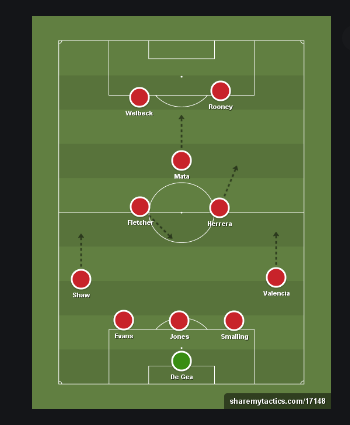People use the same two or three search engines for all of their needs, but they use different social networks to cover different aspects of their lives. They want to create tactics.

The same person may use LinkedIn for their professional life, Facebook to keep up with friends, Twitter to get the latest news, and Instagram and Pinterest to share pictures.
But there are other social networks, smaller ones, that have other uses as well.
And although they are “smaller,” they still have tens or hundreds of thousands of users. If a large percentage of these users are in your target audience, that should justify being active on that network.
Here’s the big benefit of smaller networks: barely any other business uses them!
Think about it. The biggest businesses need a huge audience, so they stick to the biggest social networks.
The small and medium-sized businesses typically just copy the big businesses (or most of them do).
But that leads to one problem:
All the social media strategy guides and tools are designed for the “big” social networks. How are you supposed to know what to do?
This process will work on just about every social network out there.
Finding smaller social networks

One of the reasons why very few businesses take advantage of the smaller networks is because they are harder to find than the ones that everyone talks about.
Expect to have to dig around for 30-60 minutes to find the best one for your business.
Keep in mind that you don’t need a network to have millions of users to make it a good target for your marketing.
And there are hundreds of social networks that fit this criterion, so it’s just a matter of finding the right one(s) for your business.
A good starting place is this Wikipedia list, which has about 100 different networks. Each network has a description to help you determine whether it might be right for you.
An important note: don’t expect every network to look and act like Facebook and Twitter.
At first, you might not be sure if you can find a way to turn users into customers, but in most cases, there’s a way if you’re willing to be creative (more on that later).
What networks are based around
All networks have their own purpose—their own sort of niche(s).
Ideally, you’re looking for networks that align with your business’ niche(s).
Most networks are based on certain types of interactions, interests, or locations. Most are a combination of the three.
For example, Badoo is a social network with 20 million active users, but it’s mainly popular in Latin America and certain European countries such as Italy and Spain.
Or consider Meetup, which allows people in certain cities to create groups around interests. This is a great network for local businesses because you can engage people in your area in person.
Finally, Classmates is a network dedicated to reconnecting with high school friends. It’s essentially one specific part of Facebook.
There are many networks that are location independent. They focus on specific interests. They can get really specific.
For example, Ravelry is a social network for people who love knitting. If you owned a business related to knitting, you couldn’t find a better place to interact with your audience.
For now, write down all the networks you think might have your target audience.
Time to answer a HUGE question
Here’s what you need at this point: an account plus a plan to get users to your website.
If you need help with a plan, review this social media strategy, and then modify it to suit your network.
The huge question that you need to answer right now is:
Do you want to commit to this network for several months?
The reason why this is so important is because your results on almost any social network will be slow at first. It’s only after consistently being active and executing your strategy that you will be able to drive significant traffic.
So, if you don’t think you could do it for longer than 5-6 months, you might as well not start.
That’s the mentality you need to possess to succeed with your plan.
Let me illustrate this for you…
If you go to my Facebook page right now (just search “Neil Patel” on Facebook), you’ll see that even in the worst-case scenario, I still get over 100 likes and several shares. Note that only a small percentage of traffic actually “likes” the share, so it drives considerably more:
That seems good, right?
The most important key to social media success
Do you get it?
How you execute your strategy on a consistent basis will either make you or break you. That’s why I devoted an entire section to it.
Besides having the right mindset, you’ll also need other things, namely content.
Not all social media sites are built on content, but most are.
And when I say content, I’m talking about articles and guides that you can share with the network community through your profile…just like you would by posting on Facebook or tumblr.
Part #1 – Decide what kind of content you need
You probably already know this because of your earlier research.

Figure out what role content plays in the way users interact.
On the knitting network, users shared tutorials and tips on the forum. Sharing good content there could help you build up your reputation and make more connections.
On tumblr, you share content by posting it to your blog. You can even repost entire blog posts there as long as you credit the author.
On networks more similar to Facebook and Twitter, you need short messages to share. Some will be short descriptions with a link to a blog post, but some will be interesting messages like inspirational quotes.
Once you know what type of content you’ll need, move on to the next part.
Part #2 – Find proven content that attracts shares
The first goal of sharing content is to share something that your followers and community actually value.
When you do that consistently, it does many good things. It:
- first creates, then deepens your relationship with your followers
- helps you become more respected in the community
- allows you to drive traffic to great resources
- optional: allows you to build relationships with the authors of the content you share (extra bonus!)
If you’re serious about success, you need to find a way to do this
What’s the key to social media success?
Consistency (just reminding you).
So, now that you know what content and how much of it you need to post, you need to come up with a system that will help keep you on track.
The two components of such a system are: its efficiency and ease of implementation.
Having to log in and make a post every X hours is not easy or efficient. You’ll likely miss some posts that you’d like to make, which will slow down your results.
Luckily, there are some ways to design a system that’s better, mostly through automation.
Determine what can and should be automated
It would be great if everything could be automated because it would take no time on your part, but it can’t be.
Some things can’t or shouldn’t be automated:
- Curating content – don’t just share any content. Take the time to read posts so that you can share the best ones.
- Interacting with users – you can’t automate authentic conversation. If you’re ever commenting or messaging a user, do it yourself.
Your strategy needs to be refined
It took me years of trial and error to figure out how to create a solid system for the big social media sites. And it’s still not perfect.
Your strategy is likely good if you followed all the research steps, but it could always be improved.
And just a few small improvements can lead to a much faster growth rate in the long run.
So, how do you refine a system?
As you use the network more, you might notice that some things you’re doing aren’t as effective as they should be.
However, the best way to refine a system is by using data. Data doesn’t lie.
Here’s what you should do:
- Pick important metrics to track
- Follow your strategy for 30 days
- Evaluate results based on metrics
- Test changes and repeat #2-4
To start with, you’ll need to pick a few metrics to track. I recommend two to four.
When I say important, I mean pick those that influence the amount of traffic you can drive to your site. Even if you’re not driving much traffic now, it will make a big difference in the future.
Using Facebook as an example, I can tell you that the important metrics are:
- Page likes – the more page likes, the bigger the audience that I can share my content with (and that can click through)
- Status likes – friends of followers who like a post also see it, potentially growing my audience
- Status shares – the more shares, the wider my reach
- Comments – more interaction will add social proof to my content